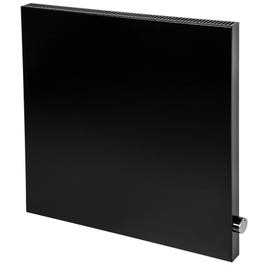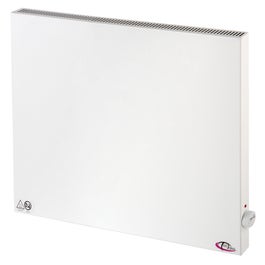Is infrared heating an alternative?
Standard heating methods using oil, electricity or gas have a range of downsides. As these are convection heating methods, heating causes air circulation, which makes the air dry, moves dust onto objects and the floor and encourages the development of mould. Apart from this, convection heating uses a lot of energy, which can be seen in your heating bills. The fact that many people are investing in infrared heating is no coincidence, as they’ve been won over by the countless benefits when compared to standard heating methods. The reason why so many people are buying infrared heaters is that these models are a great option for heating homes. In the long-term, only using electric heating is very expensive.
Why buy infrared heating?
Heaters that use infrared have many benefits over standard heating systems. As infrared heaters use radiated heat rather than convection heat, all the negative features of oil, electric or gas powered heating don’t apply. There is no air circulation, which is bad for the room’s air. Mould is prevented and dust isn’t whipped up into the air. Heating using infrared heat is therefore ideal for people with asthma or allergies. Convection heats the air, which then rises and pushes the cold air downwards. That’s why your head may be warm but your feet are often freezing cold. Infrared rays are evenly applied to surfaces and then the surrounding air, creating even warmth. The rays go further into the skin than convection heat, i.e. the temperature is automatically felt more, so you can set your thermostat a couple of degrees lower than you normally would with standard heating. In this way, you can save quite a bit of money when you purchase an infrared heater. What’s more, the purchase price is very low and the heaters themselves are space-saving. It’s also so quick and easy to install these heaters. Another benefit is that infrared heaters are long-lasting and safe as they’re airtight. And these heaters can’t freeze.
How does infrared heating work?
Infrared heating is powered by electricity. The heater turns this electricity into infrared rays. Unlike convection heaters, infrared heaters heat the air with waves. These don’t directly heat up the air, rather radiate heat onto surrounding surfaces, from which the heat is evenly distributed around the room. The heat penetrates the skin more deeply, which feels like laying in the sun or spending time in a room with a wood burner.
How effective is infrared heating?
Infrared heating is considerably more effective than standard heating systems. Around 86% of the energy used by the heater is actually turned into heat rays. Oil-powered heating uses no more than 80% of its energy. A major factor for the efficiency of heaters that heat up rooms using infrared rays is the surrounding surfaces. For one, this depends on the material in the walls or furniture near the heater. Some materials conduct heat more than others. And secondly, fewer rays can be passed into the air in an empty room than in a furnished room full of objects.
How hot do infrared heaters get?
The maximum temperature of these heaters varies depending on the manufacturer and model. In general, the surface of the actual heater can reach around 90°C to 125°C.
Is infrared heating dangerous?
Infrared heaters are completely safe to use. They give off the same vitamin-C rays as the sun, and these are essential to life. Infrared rays strengthen the immune system and generally have a beneficial effect on the body.
Is infrared heating economical?
If you buy infrared heaters, the purchase price will be fairly low. If you decide to heat your entire home with infrared heaters, it can get expensive. It can be three to four times more expensive than oil-powered heating. But the infrared rays are more energy-efficient. Buying an infrared heater as an additional heater in your home is ideal to improve air temperature. For some rooms, it’s even cheaper and more logical to use infrared heating. In a summerhouse or beach hut, a large heating system with gas, oil or normal mains power would be significantly more expensive.
Where and how to hang?
For the most part, infrared heaters are used in larger rooms or spaces. These include greenhouses, stables, sports halls, football halls etc. But these appliances can also live up to their full potential at home, as long as you keep a few things in mind. You should ensure that the walls and windows in the room are 100% airtight so no energy is lost. Infrared heaters come in various options and shapes. Newer models designed for indoor use are often portable. You can get infrared heaters that look like balls or mirrors. So they can become a versatile part of your room. Often, several heating surfaces can be combined to create a heating system. They are installed as high as possible in a building or room. The radiation radiuses of the various heating surfaces should overlap. Of course, where you install heaters depends on the power supply the heater will use.
To sum it up
Infrared heaters are a useful and decorative addition to your home’s existing heating system. They have a range of benefits. Infrared gives you a lovely feeling of warmth, and stimulates the immune system as well as blood circulation. They are relatively cheap to buy, easy to install and versatile to use. These are just some of the benefits. If you don’t like the look of standard radiators, you can opt for an infrared heater that doesn’t look like a heater at all.

